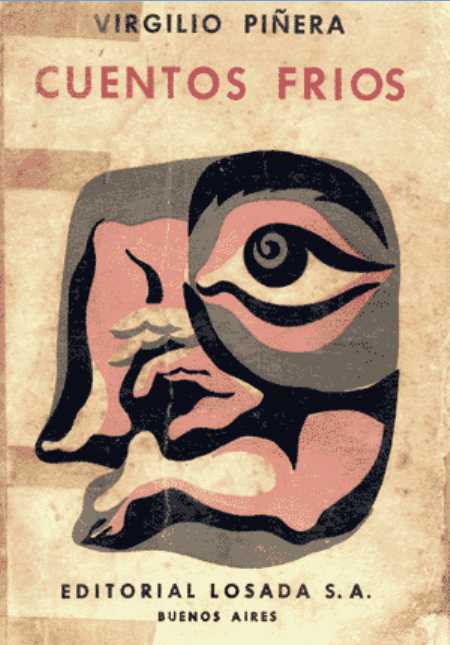4.1.2.3.7 “Cold Stories”, 1956, and others published by Virgilio Piñera before 1959

From 1955, the short story “The Enemy” was published in Buenos Aires. It reveals a personality trait of the writer, a kind of autobiographical confession or slip of the tongue: fear, a feeling that strongly marked his relationship with the world and also with himself. In this regard, Antón Arrufat expressed this in the prologue to his “Complete Stories” regarding the aforementioned piece:
“…it is not one of Piñera’s great stories, however it constitutes a shocking confession, one of those figures that an author of oblique writing suddenly and unexpectedly offers his reader.”
The “Cold Tales” bring together pieces from different thematic groups that had already been emerging in Piñera’s fiction, all of them based on the matrix of absurdity that he systematically contrasted with reality or extracted from it. According to Alberto Garrandés in “History of Cuban Literature,” these themes or narrative modus operandi can be distinguished throughout his work, some of which are expressed in this text:
a) tales of physical mutilation
b) stories in which various models of the world are constructed
c) stories – riddles where the author proposes a type of game to which the characters will submit
d) tales of obsession (the masks that obsessive behavior adopts)
e) capsule stories
f) stories that describe and translate into fiction the dilemmas of writing, the creative process
“The Flesh,” “The Actaeon Case,” “The Parts,” “The Change,” and in some ways also “The Fall” fall into the first thematic group, although they cannot be reduced to a mere term. In them, the author alludes to the experience of beings who react by defending an ideal over the purely physical, as an exacerbated response to a hostile environment that oppresses them with violence, although this violence is not fully manifested in the equally elliptical space of the stories.
For their part, “The Dance,” “The Album,” and “Project for a Dream” constitute models of the world, based on the way Piñera has perceived his reality. “The Album” in particular is a reflection of banality, shared by different social strata, where the hierarchy of the transcendent and the inconsequential is reversed, while reality blurs to come alive in portraits that are more evocative than visible.
“The Decoration” and “The Great Baro” are part of the group of stories about obsession; just as “The Park,” “The Commerce,” “The Wedding,” “The Battle,” “In Insomnia,” and “Hell” are associated with the so-called capsule stories, many of which are already included in the text of “Poetry and Prose,” in which conciseness and economy of language constitute the characteristic features for describing dehumanized, almost mechanical environments.
In a general sense, this book, although it does not express an evolution from a narrative essence that was already given in all its elements and combinations, shows his maturity as a writer and the establishment of an expressive mode that had at its root a discouraged worldview of the way of life of his time, a loss of true values, with which Piñera could not annul the emptiness either.








